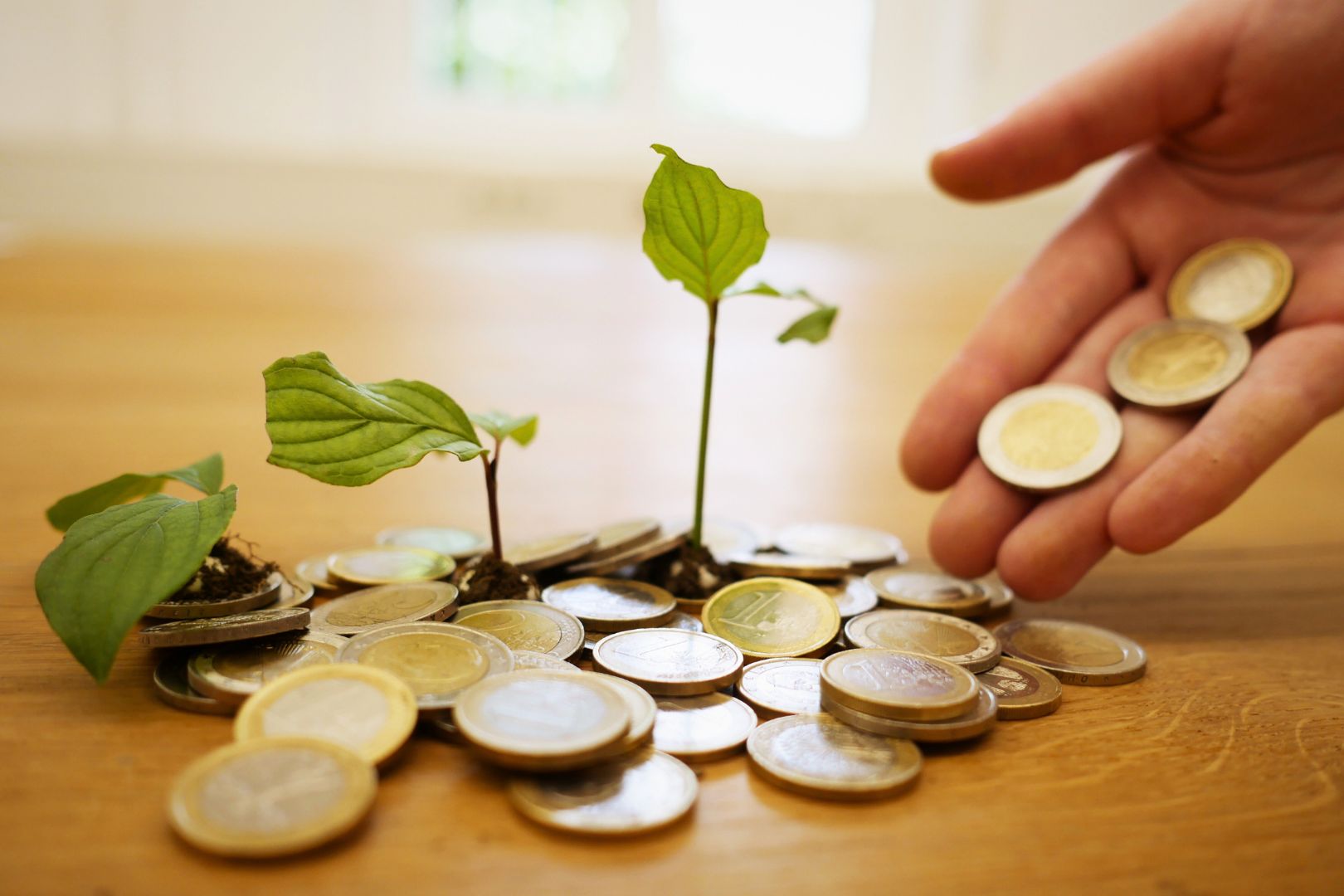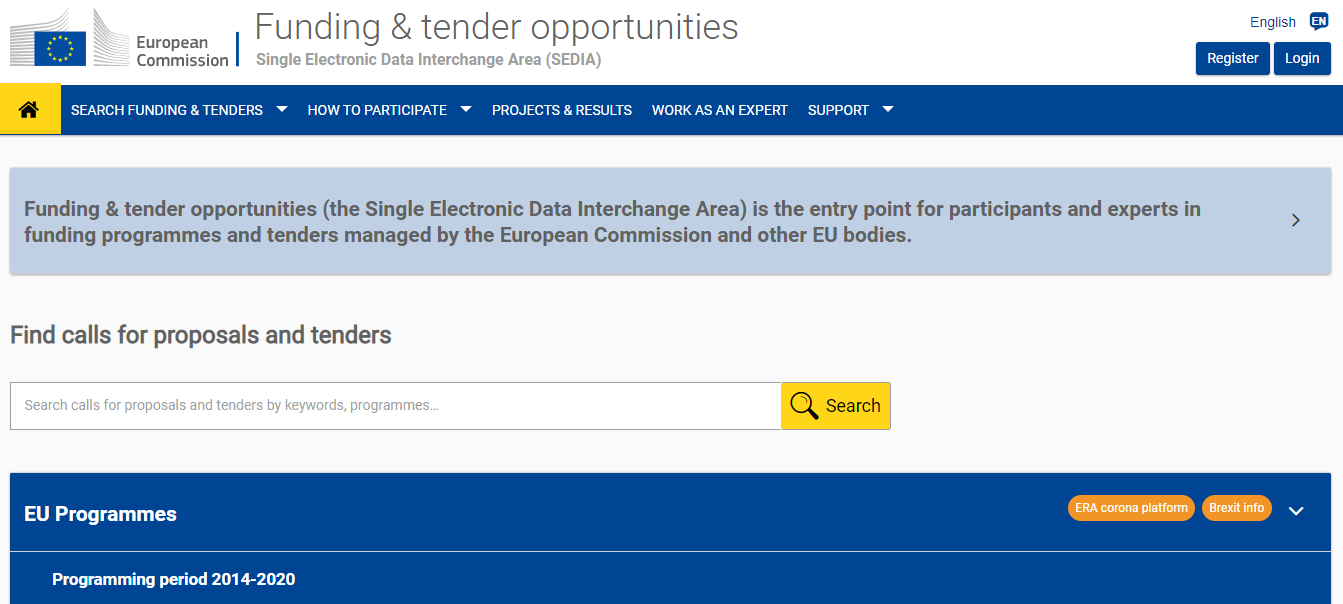Newsletter
About the Author: Paula Morán
The Funding & Tender Opportunities Portal (F&TP) (the Single Electronic Data Interchange Area) is the entry point for participants and experts in funding programmes and tenders managed by the European Commission and other EU bodies.
Through the F&TP, organisations are able to:
- Search and apply for funding opportunities in calls for proposals
- Search a call for tender and submit a tender
- Manage your grants
- Register as an expert, manage contracts and payments online.
- Create an EU Account
Step 1. Create your EU account
In order to access all this content, your first step is to register on the F&TP to create your EU account. To complete this process, you will have to provide a username, your first name, last name and e-mail address and the displayed security code. Afterwards, you will receive an e-mail to the address that you specified, containing a link you can use to complete the registration process.
Step 2. Register your organisation
The second step you need to complete is the registration of your organisation. In this process you will need to provide basic administrative and legal data as well as some contact details.Upon completing the registration of your organisation, you will receive a PIC number. The PIC or Participant Identification Code is a 9-digit number serving as a unique identifier for organisations (legal entities) participating in EU funding programmes. This unique identifier of your organisation will be used as a reference by the Commission in any interactions.
Step 3. If you are an SME, you need to complete the SME Self-Assessment
If the SME-status is not an eligibility criterion for your call, you can skip this step. You may simply declare such a status in the Participant Register without going through the SME Self-Assessment. If you are applying for one that does, keep on reading!
Before submitting a proposal, you need to make sure that your organisation qualifies as an SME. In this process, which the system will prompt automatically if there is no recent information of your organisation (over 2 years), you will be required to complete the SME questionnaire. On it, you will need to enter the financial figures of the last approved accounting period of your organisation and of any other organisation that might be directly or indirectly related to it.
If your company has not been validated as an SME in the last 2 years, even if you had previously qualified as an SME, the system will demand that you re-do the SME Self-Assessment.
Step 4. Create the proposal
Once you have created your account, the next step is to log in and select the Call Topic for which you will submit your proposal. You will find it on the section “Search funding & tenders”.When you have selected it, press the “Start SUBMISSION” button and follow the steps, which include entering your organisation’s PIC number and selecting your role on the proposal (main contact or contact person). Once this is completed, you will have to indicate your project’s acronym and short summary (which can be edited later)
Step 5. Upload the proposal documents
If applicable, there will be an intermediate step in which you will have to select the partners which will be participating on the project by indicating their PIC number.
If you are following the step by step process, you will now arrive to step 5 which is called “Edit Proposal”. If you have logged out and came back, you will have to click on the Actions button next to the proposal and select Edit on your Funding & Tenders Portal personal area.
In this last step you will be requested to fill out the administrative forms through a step by step wizard, which include General Information, Administrative data of participants as well as Call-specific questions.
After this, you will be asked to upload part B – Project description and implementation and the Annexes.
When you have uploaded everything, press validate and submit and if there are no errors, the ‘Proposal Submitted’ Page will appear.
Now it’s your turn to submit your proposal!
Previous posts

Ensuring an accessible bioeconomy: MainstreamBIO digital toolkit
Adopting the bioeconomy may feel a lonely journey, but it is not! Plenty of people have already implemented bioeconomy practices and initiatives. MainstreamBIO has developed a digital toolkit to help you learn about existing [...]

Innovarum attends the General Assembly of Like-A-Pro in Wuppertal, Germany
Our colleagues from Innovarum Adrián Escribano and Ana Díaz attended the General Assembly of LIKE-A-PRO, held at Codeks Factory in Wuppertal on April 9th and 10th, 2024. As pioneers in innovative solutions, we were [...]

Horizon Europe Cluster 6 calls: Insights and Recommendations for applicants
In our previous blog post, we delved into the success rate and average budget of the first 2024 call for proposals within Cluster 6, whose last deadline for submission was on 28th February. In [...]

Closure of Horizon Europe Cluster 6 Calls: Assessing the Impact
On February 28th, the latest round of calls for proposals under Cluster 6 of Horizon Europe ended. In this blog post, we delve into the success rate and average budget of the 2024 first call [...]

Innovarum participates in the KOM of OrganicClimateNET
Last 27th of February took place the Kick off Meeting (KOM) of OrganicClimateNET in Fulda, Germany. Innovarum was present as one of the partners of the project. A more organic Europe Recognising the key [...]

Tips to improve your EU project social media
If you want to improve your project's social media, you need a plan. Here are some tips to gain visibility, generate traction and increase your subscribers on social media: Know your target Not everyone uses [...]
#WeMakeInnovationHappen
Do you have an innovative idea for a project? Are your looking for project management support? Do you need a Dissemination and Communication Partner?

